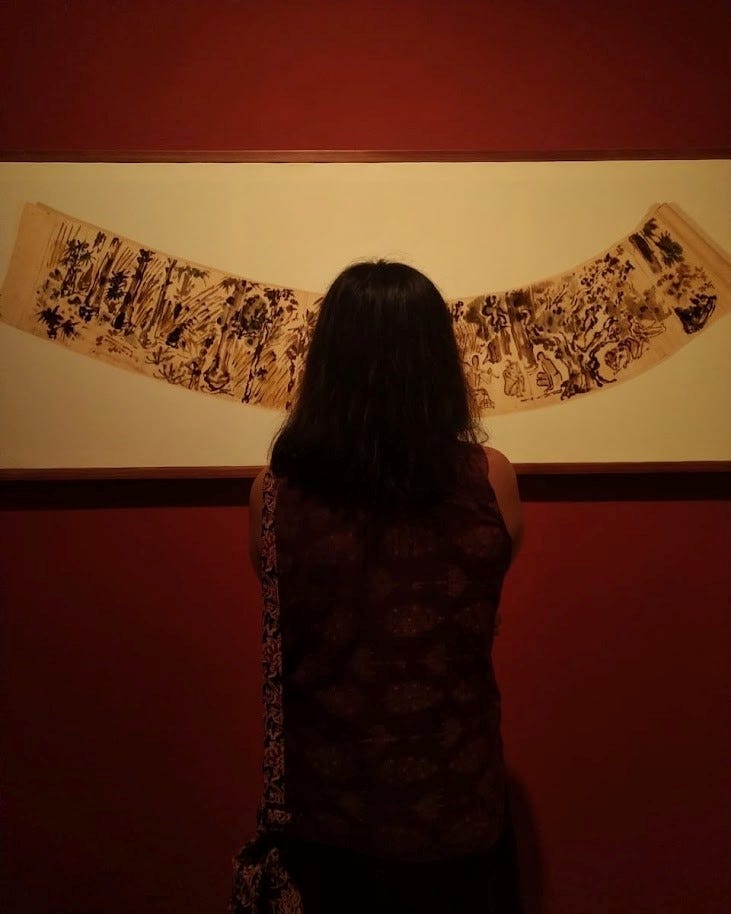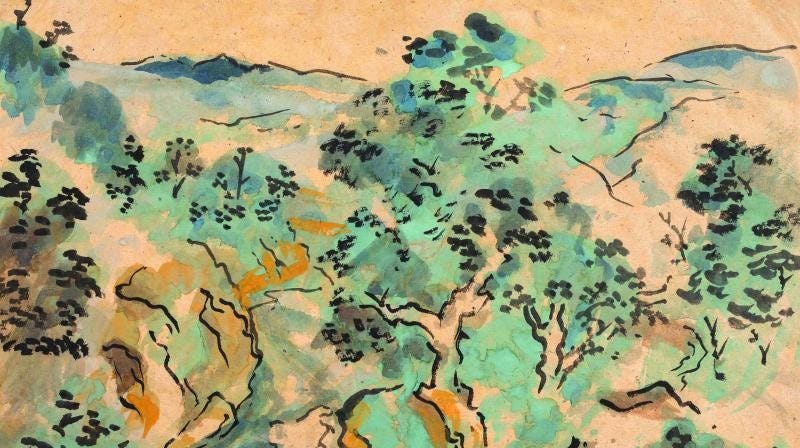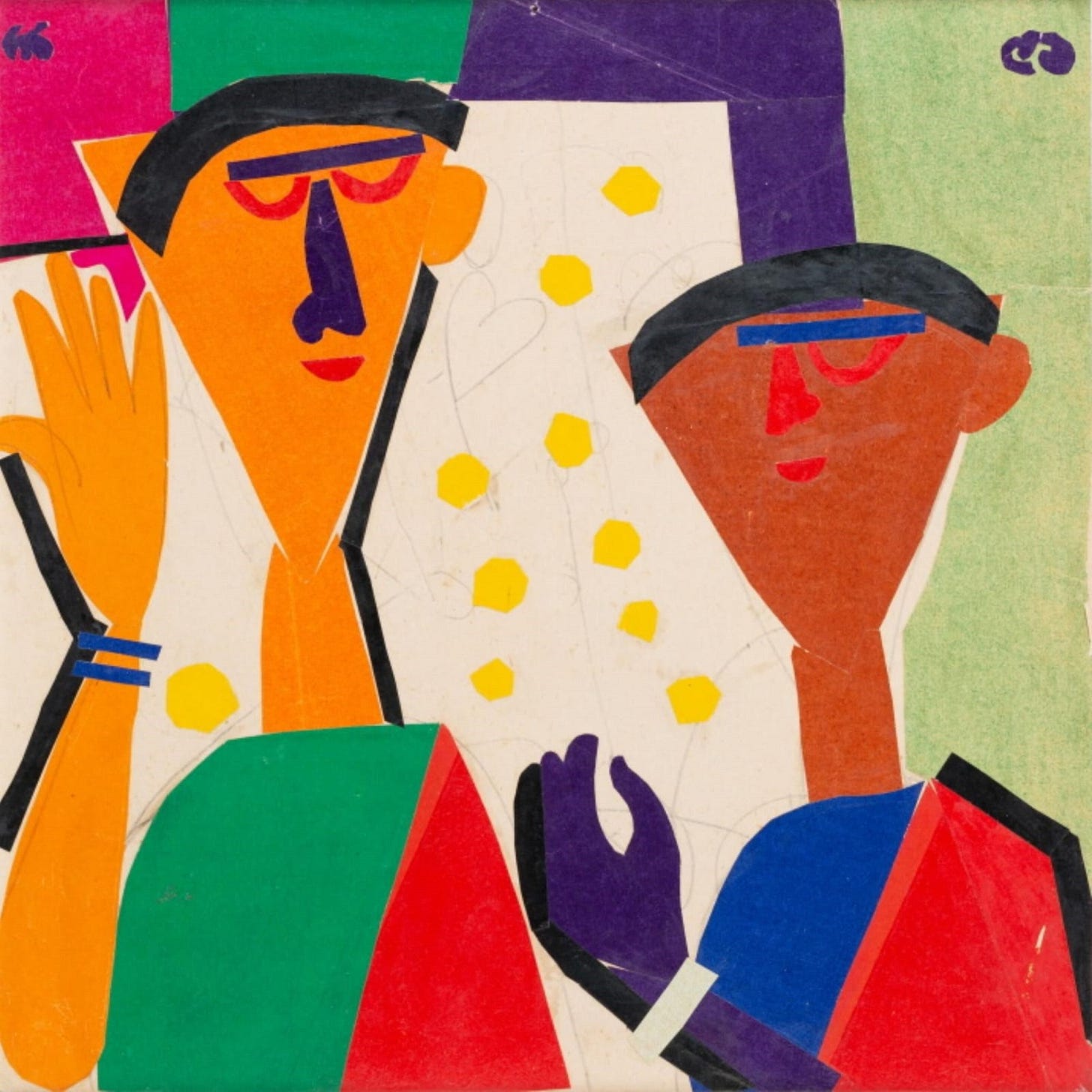Scenes from Shantiniketan
Discover the artistic legacy of Benode Behari Mukherjee, the Father of Indian Murals, whose captivating brushworks vividly depict the rural landscapes and everyday life of Bengal.
On a market day, under the radiant sun, the village is a fairyland of colours. Little children climb trees, pluck raw mangoes. And rest by the banks of Kopai.
The sun-baked, red, rugged terrain (known as 'khoai') of the rural landscape comes alive in sharp graphite strokes on his canvas.
There are no nationalist, mythological, or religious themes in his work. But only brushworks capturing hallucinating forests, rural habits, and the hustle bustle of everyday life.
Doughy-necked characters are caught in the unnoticed moments. Dolon champa is painted with the reconciliation of eastern calligraphic and early Renaissance techniques. 44.6 feet long handscroll depicts a complete panoramic view of the Bengal landscape in the 1920s.
He has done it all. All of this and more, while braving and overcoming the biggest challenge of his lifetime — his vision.
He is the Father of Indian Murals, one of the pioneers of Constructivist Modernism — Benode Behari Mukherjee.

In the afternoon, Mukherjee would slowly sip hot cups of chaa in the isolation of his mud house in Shantiniketan. In 'The Inner Eye', a documentary by Satyajit Ray, we see him dipping his fingers into a cup, as he fills it with raw chaa. From measuring the level of black tea in a cup to feeling the grooves and bents in a wall that he would turn into a mural — his fingers guided most of his life and work.

But why take this trouble? Why create so desperately, against every insurmountable odd?
Because, maybe, our art is our only legacy. Our only means of discovering a continuum of human experience across all parts of the world and all periods of history. Of silently reconciling with the forgotten potential within us. Of acknowledging the crooked teeth we were always told to hide. And of leaving some evidence for the future archaeologists to find.
A clay pot. A tribal mural. A letter to a lover.
So as long as you are here, draw the bizarre. Write about everything that's overlooked. Play the khol and dance to its tune. Comfort the disturbed, and disturb the comfortable. And realise how... love and art have always been the same thing. The mere process of explaining life the way we never could.

This piece is contributed by Aishwarya Roy who is a Biotechnology post-graduate and a poet from Kolkata. The engineer in her tries to solve life-problems, and the writer in her scribbles art on forbidden walls.
Her Instagram handle is @aish_whereya_at





